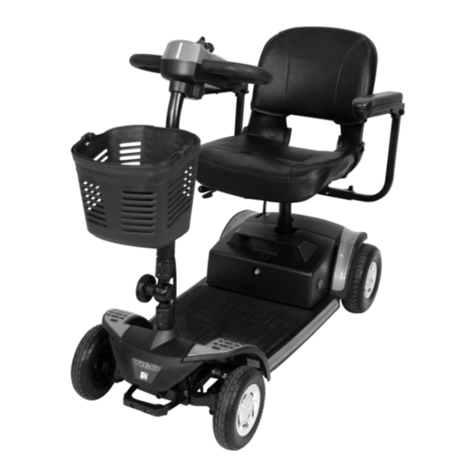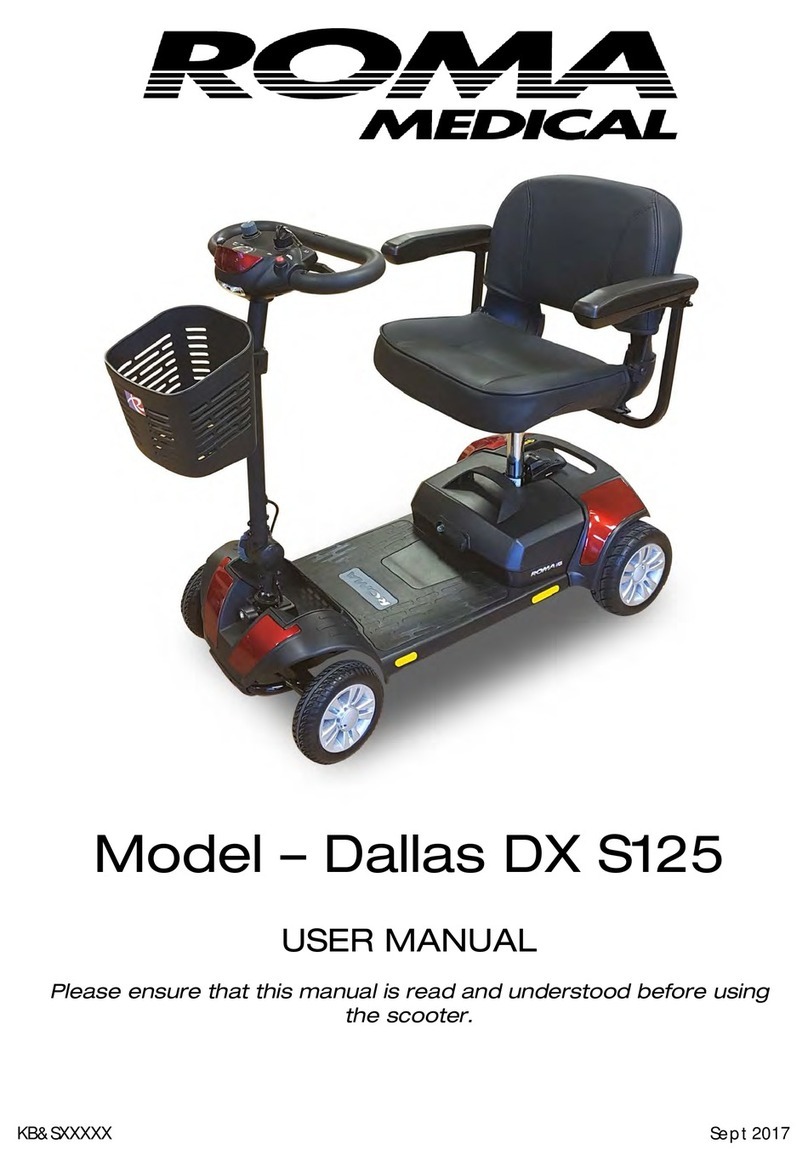
5
Safety advice
• Read this manual carefully before using your scooter.
• Turn the power off when transferring to and from the scooter.
• Select a slow speed when going down gradients (max 8°) or over uneven ground.
• Keep your feet on the scooter whilst driving.
• Ensure the seat is in a fixed position facing forwards before driving.
• Ensure the tiller is secure.
• Ensure the batteries are fully charged before your journey.
• Avoid rough or soft terrain and long grass wherever possible.
• Be aware of other road users and pedestrians.
• Turn the power off when not in use.
• Follow the maintenance guide to ensure safe operation of the scooter.
• Always remove the keys if leaving the scooter unattended. Unauthorised persons/
children may use the scooter resulting in injury.
Do:
• Carry passengers.
• Exceed inclines over 8°.
• Traverse inclines.
• Attempt inclines if the surface is slippery.
• Turn sharply at full speed.
• Exit or enter the scooter unless the power is switched off.
• Switch off the power whilst driving – this will cause the scooter to stop abruptly (see
emergency procedures – page 16).
• Use the scooter where you cannot safely or legally walk.
• Attempt to climb or descend kerbs except drop down kerbs.
• Use the scooter if under the influence of alcohol or any medication.
• Use a mobile phone whilst driving.
• Attempt to negotiate steps or escalators.
• Sit on the scooter if being transported in a vehicle.
• Attempt to tow any other devices.
• Exceed the stated weight limit.
• Connect any other devices to the batteries as this could cause permanent damage and
void your warranty.
• Use any other batteries/charger other than those supplied by ROMA.
• Travel through water or over soft terrain (mud, sand etc.)
• Lift the scooter by the shroud assembly or any plastic part.
• Sharply shift your centre of gravity as this could make the scooter unstable.
• Freewheel down hills. This will damage the motor and brake and void the warranty,
• Tow the scooter with any other vehicle in the event of a breakdown.
• Use USB Charging port when wet or with an damaged USB cable.
Do not:
Every care has been taken to ensure that your scooter will give you safe, reliable service provided you
adhere to the advice given above.





































